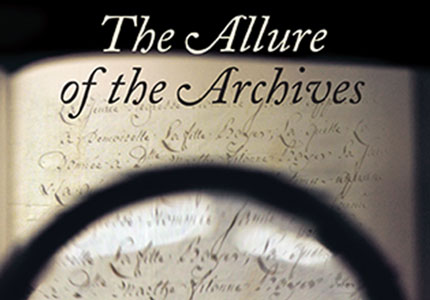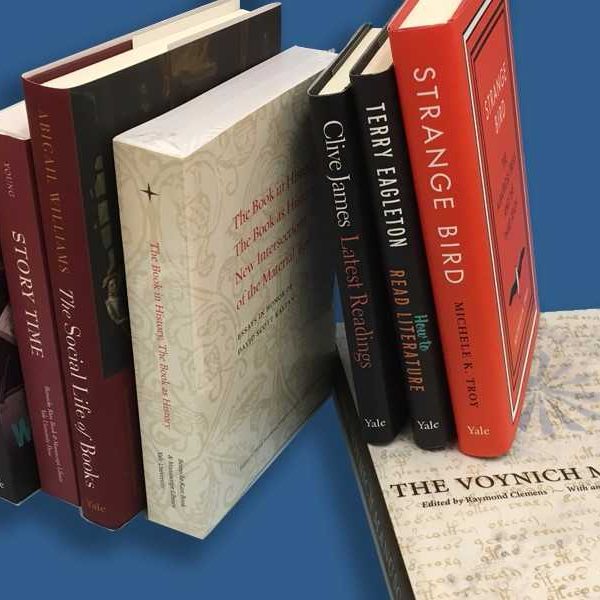Surrendering to The Allure of the Archives : The Joys of Historical Research
Whether it’s summer or winter, you freeze. Your hands grow stiff as you try to decipher the document, and very touch of its parchment or rag paper stains your fingers with cold dust. The writing, no matter how meticulous, how regular, is barely legible to untrained eyes. It sits before you on the reading room table, most often a worn-out looking bundle tied together with a cloth ribbon, its corners eaten away by time and rodents.
 Anyone who has spent some time in an archive room will immediately understand the tension and thrill with which Arlette Farge describes her experience of handling age-old documents. Farge, Director of Research in Modern History at the Centre National de la Recherche Scientifique in Paris, first published Le Goût de l’archive in 1989. It has since become a classic in the field of historiography, and is here translated by Thomas Scott-Railton in The Allure of the Archives, a captivating account of historical research and personal discovery.
Anyone who has spent some time in an archive room will immediately understand the tension and thrill with which Arlette Farge describes her experience of handling age-old documents. Farge, Director of Research in Modern History at the Centre National de la Recherche Scientifique in Paris, first published Le Goût de l’archive in 1989. It has since become a classic in the field of historiography, and is here translated by Thomas Scott-Railton in The Allure of the Archives, a captivating account of historical research and personal discovery.
As Farge was combing through the judicial records of eighteenth-century France, she was struck by the extraordinarily intimate portrayal of the lives of the poor in pre-Revolutionary France, especially women. When she looked at the words on the pages, she saw people: “The archive shines a light on the people of the city and their many faces, picking out individuals from the crowd, and casting silhouettes on the city walls.” The Allure of the Archives is Farge’s effort to share this exhilaration of uncovering hidden secrets with her readers, whether they be professional researchers to whom such pleasures are familiar, or history buffs curious to find out more about this craft.
To read The Allure of the Archives is to be invited into Farge’s experience in the archive rooms. We follow her through the process of getting a reader’s card, locating the correct office, finding the best seat, and walking up to the inventory shelves. We are there, with her, in the “inventory rooms with researchers poring over the card files, clacking the wooden drawers closed,” or in the “reading room, distracted momentarily by a neighbor’s cough or an archivist’s ringing phone, and yet totally caught up in our quest.” From between two pieces of paper, Farge slips a cloth out, covered in elegant handwriting, and we begin to read over her shoulder:
It’s a letter, the work of a prisoner in the Bastille, many years into a long sentence. He is writing his wife a pleading and affectionate letter. His dirty clothes were being sent to the laundry, and he took advantage of the occasion to sneak out a message. Nervous about the outcome, he begs to laundrywoman to please stitch a tiny blue cross on a pair of his cleaned stockings. This sign would reassure him that his cloth note reached his wife. That this piece of cloth now sits in the prison archives says of itself that no small blue cross was ever stitched into the prisoner’s cleaned stockings …
In this sensitive review from the Los Angeles Review of Books, Michael Moore describes the valuable insights offered by Farge’s book:
In this elegant and captivating (and admirably translated) account, a book that can fittingly be read alongside Marc Bloch’s classic The Historian’s Craft, we gain an appreciation of historical research as a calling, an obsession, and an insight into how our ideas about the past might be shaped, not by our need for a likely story, but by our pressing desires to study the past and to think about the dead, desires which forces us into a halting and strange conversation with old remnants, old paper, and words captured out of time.
Indeed, as we read Farge’s lyrical reflections on the challenges of interpreting and writing history, we are pulled into that “roaming voyage through the world of others,” and compelled to think about our own relation with the past.




